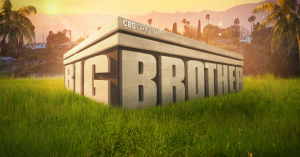This article contains major spoilers for Season 2 of The Last of Us. Do not continue reading if you haven’t watched the episode and wish to avoid major plot revelations.
HBO‘s adaptation of The Last of Us has delivered one of television’s most devastating moments in its second season, but viewers familiar with the source material knew this heartbreak was inevitable.
Videos by PopCulture.com
The show’s second episode, “Through the Valley,” features the brutal demise of Joel Miller (Pedro Pascal), a scene that serves as the emotional catalyst for the entire season, just as it did in Naughty Dog’s 2020 video game The Last of Us Part II. While both versions share the same shocking outcome, the HBO series makes several notable adjustments to the circumstances surrounding this pivotal moment.
In the original game, Joel and his brother Tommy encounter Abby while on patrol, as they rescue her from a horde of infected during a snowstorm. The harsh weather conditions lead them to seek shelter at an outpost occupied by Abby’s group. Once inside, Joel introduces himself, immediately changing the atmosphere as Abby recognizes her father’s killer. The scene plays out violently in the game, with Abby immediately firing her shotgun at Joel’s leg to immobilize him while her companions simultaneously subdue Tommy with brutal force, rendering him unconscious and unable to help his brother.
The HBO adaptation reshapes this encounter significantly. The show introduces a massive infected attack on Jackson itself, which never occurs in the game. This addition creates a more chaotic backdrop for the fateful meeting. Furthermore, Gabriel Luna, who portrays Tommy, revealed to Esquire that he had discussions with showrunner Craig Mazin about altering his character’s involvement in the scene, questioning whether “Tommy would be that careless to reveal Joel’s identity” or “so trusting of strangers” given his military background.
The show’s version also places different characters at the scene. While the game has Tommy present during Joel’s capture, the series substitutes Dina (Isabela Merced) in this role, which creates a different dynamic for witnesses to Joel’s torture. This change also means the series omits a key romantic development between Ellie and Dina that occurs in the game during this timeframe.
Perhaps the most significant modification concerns Joel’s actual death. In both versions, Abby uses a golf club to inflict horrific violence. However, the manner of execution differs drastically. The HBO show depicts Abby stabbing Joel in the neck with a broken golf club shaft after extensive torture, while the game shows Abby delivering one final, fatal blow to Joel’s head with the intact club.
Director Mark Mylod explained this creative choice to The Hollywood Reporter, stating, “I don’t have much interest in showing violence itself,” preferring instead to focus on “what motivated Abby to a place where she was doling such extraordinary violence.” This philosophy led him to “keep most of it off screen” while still conveying the brutal reality of the moment.
The deliberate finality of Joel’s on-screen death in the HBO series eliminates any potential audience confusion about his fate. The adaptation’s definitive depiction of Joel’s death ensures viewers clearly understand the finality of his fate, allowing the narrative to properly center on Ellie’s devastating emotional response to witnessing the murder of the only parental figure she has left in this apocalyptic world.
Despite these differences, both versions share the same emotional core, forcing Ellie to witness Joel’s murder, setting her on a path of vengeance that will drive the remainder of the season, mirroring the game’s central narrative of revenge and its devastating consequences.








